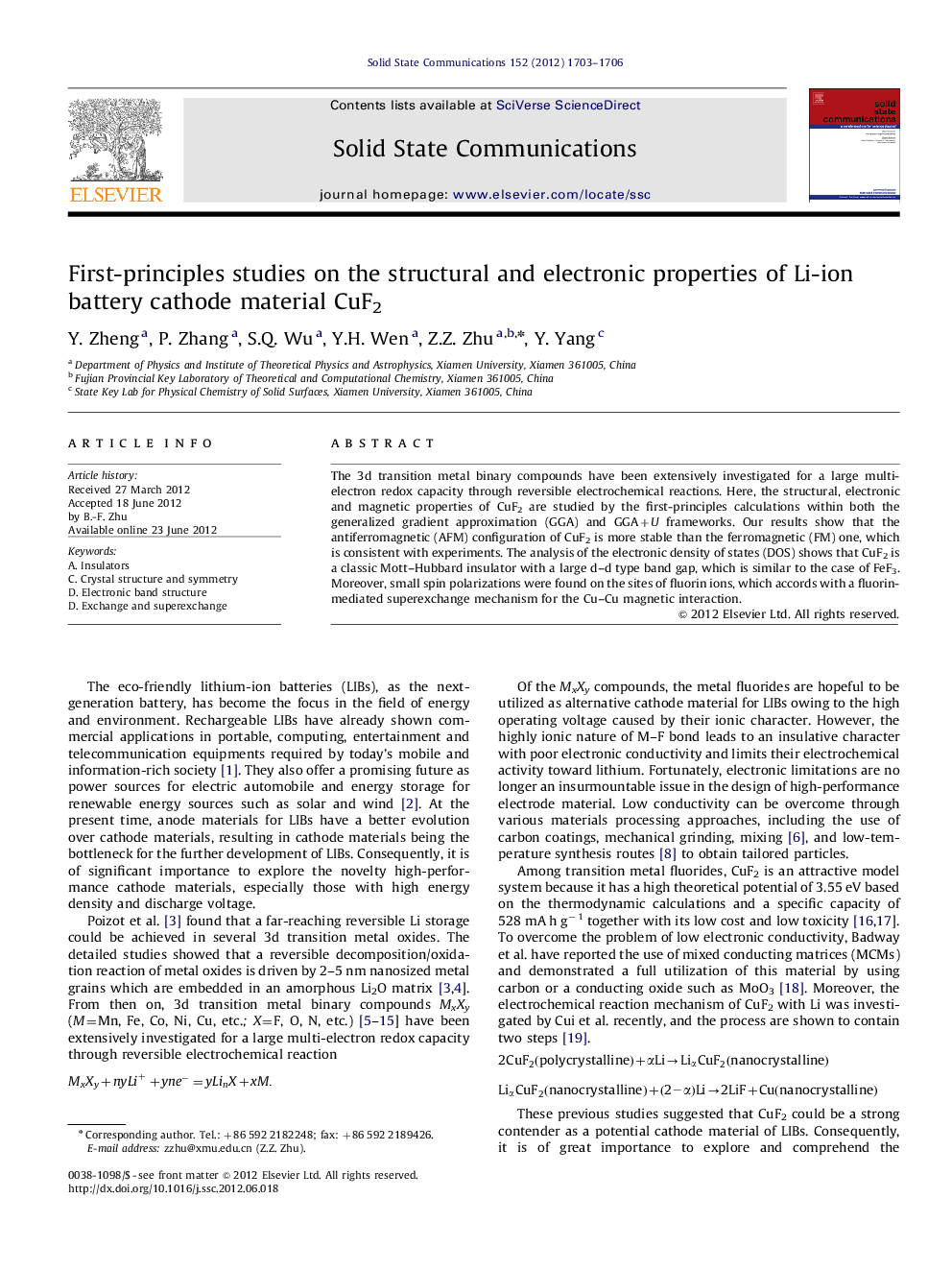| Article ID | Journal | Published Year | Pages | File Type |
|---|---|---|---|---|
| 1592882 | Solid State Communications | 2012 | 4 Pages |
The 3d transition metal binary compounds have been extensively investigated for a large multi-electron redox capacity through reversible electrochemical reactions. Here, the structural, electronic and magnetic properties of CuF2 are studied by the first-principles calculations within both the generalized gradient approximation (GGA) and GGA+U frameworks. Our results show that the antiferromagnetic (AFM) configuration of CuF2 is more stable than the ferromagnetic (FM) one, which is consistent with experiments. The analysis of the electronic density of states (DOS) shows that CuF2 is a classic Mott–Hubbard insulator with a large d–d type band gap, which is similar to the case of FeF3. Moreover, small spin polarizations were found on the sites of fluorin ions, which accords with a fluorin-mediated superexchange mechanism for the Cu–Cu magnetic interaction.
► GGA can not predict correct electronic structure of CuF2, while the GGA+U can. ► CuF2 in AFM turns out to be more stable than that in FM. ► CuF2 is a classic Mott–Hubbard insulator with a large d–d type bandgap. ► The Cu1–Cu2 has superexchange interaction via the diamagnetic ligand F.
